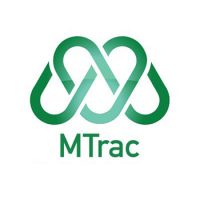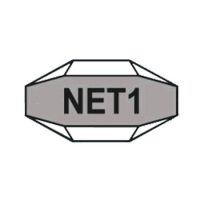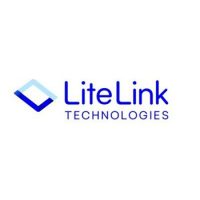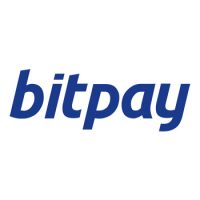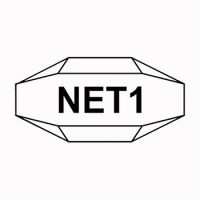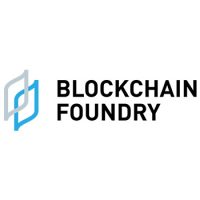Blockchain Press Releases
Picus Security analysis of 14m attack simulations reveals organizations only prevent 6 out of every 10 attacks
Blue Report highlights four ‘impossible trade-offs’ security teams make with threat exposure management
SAN FRANCISCO, Aug. 10, 2023 /PRNewswire/ — Picus Security, the pioneer of Breach and Attack Simulation (BAS) technology, has released The Blue Report 2023. Based on an analysis of more than 14 million cyber attacks simulated by The PicusPlatform*, the report highlights four ‘impossible trade-offs’ limiting modern security teams’ ability to manage their organization’s threat exposure.
“Like a short blanket that covers either someone’s head or feet, not both, security teams can only dedicate their time, money, and resources to so many problems at once,” said Picus Co-founder and VP of Picus Labs, Dr Suleyman Ozarslan. “They deploy their budgets and resources to cover one exposed spot, but this leaves other areas out in the cold. The Blue Report shines a light on these impossible trade-offs and how they hinder organizations’ readiness to defend themselves against the latest threats.”
According to the report, security teams make four trade-offs in deciding:
Which attacks to prioritize
Picus’ Blue Report data shows that, on average, organizations’ security controls (such as next-gen firewalls and intrusion prevention solutions) only prevent 6 out of every 10 attacks. However, some attack types are prevented far more effectively than others. For instance, organizations can prevent 73% of malware downloads but only 18% of data exfiltration attacks.
Organizations also prevent complex, multi-stage attacks less than half the time. This is particularly concerning given the findings of The Red Report 2023, a previous research study by Picus, which found that over a third of malware samples exhibit 20 or more attacker tactics, techniques and procedures (TTPs).
The Blue Report also reveals wide variations in organizations’ ability to prevent specific threats. For example, over a third of organizations can prevent Black Basta and BianLian ransomware attacks but only 17% can prevent Mount Locker. This is despite Mount Locker’s emergence in 2021 before the other two malware attacks.
Which vulnerabilities to remediate
The Blue Report also reveals the limitations of security teams’ approach to managing common vulnerabilities and exposures (CVEs). Analysis of the simulated attacks shows that the list of top 10 CVEs to which they remain most exposed includes mainly critical and high risk vulnerabilities as well as CVEs that have been known for years. Some CVEs discovered in 2019 remain a threat to more than 80% of organizations.
Whether to optimize prevention or detection controls
Generally speaking, the better an organization is at preventing threats, the weaker it is at detecting them, and vice versa. For instance, globally healthcare is the least effective sector at preventing attacks but is twice as successful as the average organization when it comes to detecting them. North American organizations are almost twice as successful at preventing attacks as they are at triggering alerts to detect attacks in progress.
What to log and alert on
Organizations leveraging security event and incident management (SIEM) solutions also face decisions about how much to invest in attack detection. In most cases, organizations routinely prioritize logging over alerting but do neither very well. Simulation data shows that, on average, organizations log 4 out of 10 attacks but only generate alerts for 2 in 10 attacks.
“Since preventing and detecting every threat is practically impossible, security teams will always have to prioritize some aspects of security more than others,” said Dr Ozarslan. “Fortunately, there is an approach that can help them improve their performance. By adopting a more unified approach that incorporates insights from attack simulations combined with attack surface and vulnerability data, security teams can allocate resources efficiently and effectively to address their most critical exposures. As a result, they can simultaneously improve their ability to prevent and detect attacks, rather than making trade-offs between them, and sleep better at night.”
Picus Security will discuss the findings of The Blue Report at Black Hat USA 2023 in Las Vegas on August 9th and 10th. Visit booth #2700 to learn more and discover the benefits of using attack simulations to reduce threat exposure.
Notes
* Picus Labs analyzed over 14 million attack simulations executed by The Picus Complete Security Validation Platform between January and June 2023.
About Picus Security
Picus Security helps security teams of all sizes to continuously validate and enhance organizations’ cyber resilience. Our Complete Security Validation Platform simulates real-world threats to automatically evaluate the effectiveness of security controls, identify high-risk attack paths to critical assets, and optimize threat prevention and detection capabilities.
As the pioneer of Breach and Attack Simulation, we specialize in supplying the actionable insights our customers need to be threat-centric and proactive.
Picus has been named a ‘Cool Vendor’ by Gartner and is recognized by Frost & Sullivan as a leader in the BAS market.
Frost Radar™:: Breach and Attack Simulation 2022, Frost & Sullivan
Logo: https://mma.prnewswire.com/media/2183222/Picus_Logo.jpg
![]() View original content:https://www.prnewswire.co.uk/news-releases/picus-security-analysis-of-14m-attack-simulations-reveals-organizations-only-prevent-6-out-of-every-10-attacks-301897942.html
View original content:https://www.prnewswire.co.uk/news-releases/picus-security-analysis-of-14m-attack-simulations-reveals-organizations-only-prevent-6-out-of-every-10-attacks-301897942.html

Blockchain Press Releases
Input | Output Partners with Brave to Integrate Cardano into Brave Wallet

Once live, the Input | Output (IO) led integration will bring full Cardano support to Brave Wallet, including Cardano native assets, as well as send, receive, swap, and signing capabilities- all natively embedded within Brave’s best-in-class browser wallet. This establishes Brave as a key partner to the Cardano community in the age of Voltaire.
SAN FRANCISCO and LONDON, May 12, 2025 /PRNewswire/ — Input | Output (IO), the preeminent Web3 blockchain infrastructure and engineering firm, today announced a strategic partnership with Brave Software, the creator of the leading privacy-first browser and integrated multi-chain Brave Wallet. Together, they will integrate Cardano into the Brave Wallet, enabling Cardano blockchain access and token management from within the Brave wallet.
“Our partnership with IO reflects Brave’s commitment to building a Web3 that maximizes interoperation for user choice, while giving them better tools to engage with decentralized ecosystems,” said Brendan Eich, CEO and co-founder of Brave and the Basic Attention Token (BAT). “Integrating Cardano into Brave Wallet not only expands multi-chain access, but also enhances security, governance participation, and the overall user experience.”
Through this integration, Brave users and the broader Cardano community will gain direct access to Cardano’s blockchain for activities such as governance participation and native asset management, all within the privacy-focused Brave Wallet. Additionally, Brave Wallet will support the execution of swaps with Cardano native tokens and other on-chain transactions. This major milestone enhances Brave’s multi-chain capabilities, adding to its existing support for networks like Ethereum and Solana. Cardano users will now be able to manage native assets like NIGHT, engage in governance, and seamlessly swap tokens—securely and privately—through Brave’s in-browser wallet.
“This collaboration with Brave is a natural fit,” said Charles Hoskinson, CEO of IO. “We share a vision for a more secure, accessible, and user-respecting Web3. By bringing Cardano into Brave Wallet, we are not only expanding functionality for Cardano users in the age of on-chain governance, but also advancing a new standard for how blockchain networks should empower individuals—protecting privacy while enabling active, on-chain participation.”
The partnership also sets the stage for future innovation around engagement with Cardano’s governance and Midnight, a blockchain developed by Shielded Technologies, an Input | Output spinout focused on confidential smart contracts and data protection.
Media Contacts:
Georgia Hanias
Input | Output (IO)
[email protected]
Catherine Corre
Brave Software
[email protected]
About Input | Output (IO)
Input |Output (IO) is a world-leading blockchain infrastructure and research engineering firm dedicated to building a sustainable Web3 ecosystem. IO is committed to advancing the next generation of blockchain innovation, focusing on scalability, security, and real-world adoption through pioneering research and cutting-edge engineering.
About Brave Wallet and Brave
Brave Wallet is the secure, multi-chain crypto wallet built directly into the Brave privacy browser—no extensions required. With Brave Wallet, users can manage tokens and NFTs; connect to DApps and onramp to Web3; and explore decentralized finance, social media, gaming, and more. Brave Wallet users can connect other “cold” wallets like Ledger & Trezor. They can buy, store, send, and connect to DApps on Solana, Ethereum and EVM chains, Zcash, and Filecoin.
Brave Wallet is available on desktop, Android, and iOS, and is free to use. To get started on desktop, Brave browser users can click the wallet icon near the address bar. On mobile, users can tap “⋮” (Android) or “…” (iOS), then tap the wallet icon.
Brave is a driving force leading the way for Web3 adoption, directly supporting Web3 into the broader Web through its privacy browser, independent search engine, and browser-native, multi-chain crypto wallet. Brave currently has over 85 million monthly active users. Learn more at brave.com.

Photo – https://mma.prnewswire.com/media/2683708/Charles_Hoskinson_Profile.jpg
Logo – https://mma.prnewswire.com/media/2683709/IO_Logo.jpg
![]() View original content:https://www.prnewswire.co.uk/news-releases/input–output-partners-with-brave-to-integrate-cardano-into-brave-wallet-302451409.html
View original content:https://www.prnewswire.co.uk/news-releases/input–output-partners-with-brave-to-integrate-cardano-into-brave-wallet-302451409.html

Blockchain Press Releases
Bybit Introduces BOB to P2P: Bolivian Traders Can Now Buy, Sell in Local Currency and Earn Commissions

DUBAI, UAE, May 12, 2025 /PRNewswire/ — Bybit, the world’s second-largest cryptocurrency exchange by trading volume, has expanded its peer-to-peer (P2P) platform to support the Bolivian Bolíviano (BOB), enabling users in Bolivia to buy and sell crypto with their national currency for the first time on the platform.
In addition to enhancing local access to digital assets, Bybit is launching a new merchant program that invites users to list BOB trading ads and earn generous bi-weekly commissions. High-performing merchants can earn up to 400 USDT every two weeks, with added incentives for those listing in multiple fiat currencies.
“Expanding our P2P platform to include BOB is a reflection of our dedication to financial inclusion and local empowerment,” said Mazurka Zeng, Head of Fiat at Bybit. “We’re proud to offer Bolivian users more ways to access crypto markets while also opening the door to new opportunities”.
Bybit P2P merchants receive tailored support, including 1-to-1 customer service and faster appeal resolutions. To qualify for rewards, merchants must maintain active listings for a specified number of hours each week and meet trading volume and order count targets. Performance is reviewed every two weeks, and rewards are distributed through the Rewards Hub.
This launch represents another step in Bybit’s ongoing commitment to bring crypto access and earning potential to communities around the world through localized, user-friendly P2P services.
Bybit is actively expanding in the LATAM market and has seen a consistent rise in user requests from Bolivia to support the Boliviano (BOB) on its P2P platform. As crypto adoption continues to grow across the region, adding BOB would enhance accessibility for local users and empower them to engage more easily with the digital asset economy.
#Bybit / #TheCryptoArk
About Bybit
Bybit is the world’s second-largest cryptocurrency exchange by trading volume, serving a global community of over 70 million users. Founded in 2018, Bybit is redefining openness in the decentralized world by creating a simpler, open and equal ecosystem for everyone. With a strong focus on Web3, Bybit partners strategically with leading blockchain protocols to provide robust infrastructure and drive on-chain innovation. Renowned for its secure custody, diverse marketplaces, intuitive user experience, and advanced blockchain tools, Bybit bridges the gap between TradFi and DeFi, empowering builders, creators, and enthusiasts to unlock the full potential of Web3. Discover the future of decentralized finance at Bybit.com.
For more details about Bybit, please visit Bybit Press
For media inquiries, please contact: [email protected]
For updates, please follow: Bybit’s Communities and Social Media
Discord | Facebook | Instagram | LinkedIn | Reddit | Telegram | TikTok | X | Youtube

Photo – https://mma.prnewswire.com/media/2684795/Bybit_Brings_BOB_P2P___Bolivian_Traders_Can_Now_Buy.jpg
Logo – https://mma.prnewswire.com/media/2267288/Logo.jpg
![]() View original content:https://www.prnewswire.co.uk/news-releases/bybit-introduces-bob-to-p2p-bolivian-traders-can-now-buy-sell-in-local-currency-and-earn-commissions-302452489.html
View original content:https://www.prnewswire.co.uk/news-releases/bybit-introduces-bob-to-p2p-bolivian-traders-can-now-buy-sell-in-local-currency-and-earn-commissions-302452489.html

Blockchain Press Releases
MEXC Lists 160 Tokens in April, Delivers Over 800% Returns Across Top Gainers

VICTORIA, Seychelles, May 12, 2025 /PRNewswire/ — MEXC, a leading global cryptocurrency exchange, has released its April 2025 trading highlights, showcasing impressive results in token performance, early listing advantages, and community-driven events like airdrops.
Key Takeaways:
- MEXC listed 160 new tokens in April, led by trends in Meme, GameFi, AI, and DePIN sectors.
- Top 10 new listings delivered an average of 832.33% ATH return, with HOUSE soaring +3,830%.
- Tokens with high spot trading volume saw daily returns averaging 403.49%.
- By pioneering listings for five key tokens—most notably HOUSE, which surged 11,580% between listings—MEXC gave users early access prior to their inclusion in IDO and alpha programs on other tier1 exchanges.
- Airdrop+ campaigns reached 40,000+ participants, distributing about $1.5M in token rewards with a 40 USDT average return per user.
According to the report, MEXC listed 160 new tokens in April, a 16.79% increase compared to March. This increase was driven by surging user interest in sectors such as Meme coins, GameFi, AI, and DePIN. This expansion of early-access opportunities reflects MEXC’s agile listing strategy and commitment to supporting new niches and communities.
Top New Listings Deliver 832% Average Peak Returns
MEXC’s strategic approach to listings paid off, with the top 10 tokens achieving an average all-time high return of 832.33%. HOUSE led the pack, posting a remarkable +3830.90% gain, followed by SEED (+952.63%) and TROLLSOL (+831.31%). These high performers span ecosystems including Solana, Sui, BSC, Ethereum, and Babylon.
Strong Daily Performance Tied to Trading Volume
April’s top 10 tokens by spot trading volume also posted robust short-term returns, with an average 24-hour return of 403.49%. Among them were the following assets:
- WCT (+849.40%)
- BANK (+937.10%)
- BABY (+738.00%)
The early token growth metrics highlight that activity on the platform is an important signal for early traders.
MEXC Empowers Traders with Early Price Discovery Capabilities
Notably, five tokens later featured in leading IDO and alpha programs were listed on MEXC prior to their program debuts, posting price gains of several hundred to several thousand percent between the two events:
- HOUSE: +11,580%
- PUMP: +281.54%
The report findings reinforced MEXC’s reputation as a platform where market momentum is often detected first.
Airdrop+ Events Attract 40,000 Participants, Drive New Token Buzz
MEXC ran 23 Airdrop+ campaigns during the month, attracting over 40,000 participants and distributing almost $1.5 million in tokens. The average return per participant was 40 USDT, with top-performing tokens like SEED, PUMP, and BABY included in the prize pools.
Airdrop+ has proven itself as a tool not only for attracting but also activating users, especially in Asian and emerging markets. A recent MEXC report based on the analysis of more than 100 campaigns in recent months revealed that up to 35% of new users register through participation in airdrop activities. Users involved in the campaign were more likely to continue active trading and participate in subsequent IDO/IEO offerings on the platform.
About MEXC
Founded in 2018, MEXC is committed to being “Your Easiest Way to Crypto.” Serving over 40 million users across 170+ countries, MEXC is known for its broad selection of trending tokens, everyday airdrop opportunities, and low trading fees. Our user-friendly platform is designed to support both new traders and experienced investors, offering secure and efficient access to digital assets. MEXC prioritizes simplicity and innovation, making crypto trading more accessible and rewarding.
MEXC Official Website| X | Telegram |How to Sign Up on MEXC

Photo – https://mma.prnewswire.com/media/2683370/image.jpg
Logo – https://mma.prnewswire.com/media/2668118/MEXC_new_Logo.jpg
![]() View original content:https://www.prnewswire.co.uk/news-releases/mexc-lists-160-tokens-in-april-delivers-over-800-returns-across-top-gainers-302452245.html
View original content:https://www.prnewswire.co.uk/news-releases/mexc-lists-160-tokens-in-april-delivers-over-800-returns-across-top-gainers-302452245.html

-

 Blockchain Press Releases6 days ago
Blockchain Press Releases6 days agoHTX Premieres USD1 Stablecoin Globally, Partnering with World Liberty Financial to Forge a New Era of Decentralized Economy
-
Blockchain5 days ago
Colb Asset SA Raises $7.3 Million in Oversubscribed Round to Bring Pre-IPO Giants to Blockchain
-

 Blockchain Press Releases4 days ago
Blockchain Press Releases4 days agoHTX and Justin Sun Launch $6M Mars Program Special Edition, Offering One User a Historic Space Journey
-

 Blockchain4 days ago
Blockchain4 days agoBlocks & Headlines: Today in Blockchain – May 9, 2025 | Robinhood, Solana, Tether, China, Women in Web3
-

 Blockchain3 days ago
Blockchain3 days agoBitget Blockchain4Youth sostiene l’innovazione del Web3 e dell’IA all’hackathon “Build with AI” di Google Developer Group
-

 Blockchain5 days ago
Blockchain5 days agoBlocks & Headlines: Today in Blockchain – May 7, 2025 | Coinbase, Riot Games, Curve DAO, Litecoin, AR.IO
-

 Blockchain Press Releases3 days ago
Blockchain Press Releases3 days agoBybit Surpasses 70 Million Users, Reinforces Commitment to Transparency and Institutional Growth
-

 Blockchain Press Releases6 days ago
Blockchain Press Releases6 days agoJuCoin made a global impact at TOKEN2049 Dubai, advancing its ecosystem with the “Peak Experience” vision and JuChain’s robust tech.






